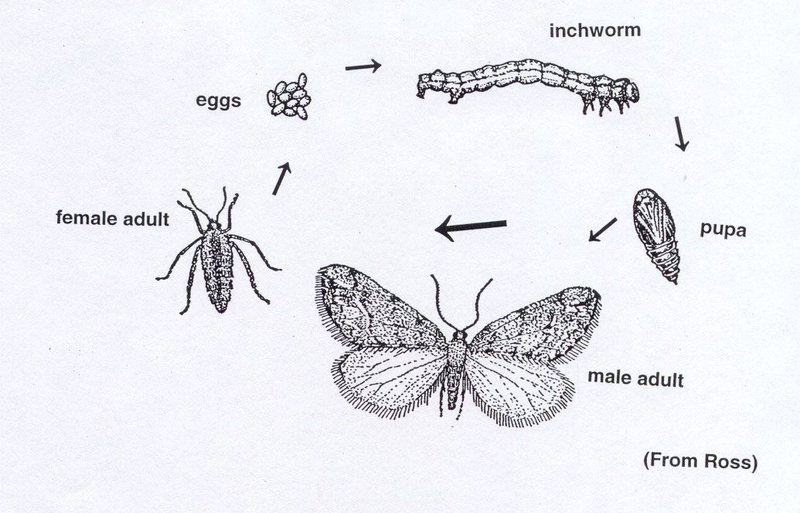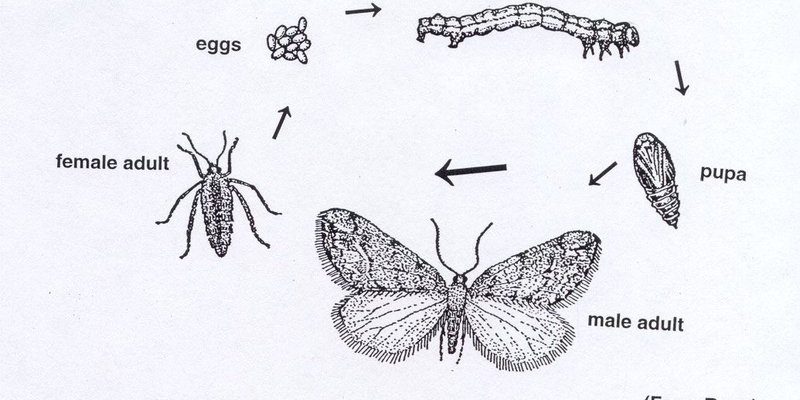
Inchworms, which are actually the larvae of various moth species, go through several distinct phases as they grow and develop. Understanding the lifecycle of common inchworm species not only satisfies our curiosity but also helps us appreciate these small wonders of nature. Let’s dive into the different stages of life for some of the most common inchworm species out there!
What Are Inchworms?
You might be wondering what exactly defines an inchworm. Inchworms are the larvae of moths belonging to the Geometridae family. Their name comes from the way they move—by contracting and extending their bodies, they appear to “inch” along. This interesting motion is a defense mechanism, as they often mimic twigs while at rest, making it harder for predators to spot them.
Inchworms come in various colors and shapes, which can be influenced by their environment. Some are green, blending seamlessly with leaves, while others are brown or gray, helping them camouflage against tree bark. Their appearance varies across species, but they all share the same distinct movement style and lifecycle stages.
The Lifecycle Stages of Inchworms
Like all creatures, inchworms go through several lifecycle stages: egg, larva, pupa, and adult moth. Each phase is crucial for their development and survival.
Egg Stage
Inchworms start their journey as tiny eggs, usually laid on the underside of leaves. Depending on the species, a female moth can lay hundreds of eggs in a single clutch. The color and placement of these eggs help protect them from predators.
Once the eggs hatch, usually in late spring or early summer, tiny inchworms emerge. At this stage, they’re incredibly vulnerable and often stay close to their hatching site, munching on the surrounding leaves. It’s a bit like being a newborn in a big, wide world—safety is priority number one.
Larva Stage
After hatching, they enter the larva stage, which is the one most people recognize as “inchworms.” During this time, they actively feed on leaves, growing rapidly. As they munch their way through their diet, they also molt several times—up to five or six times—shedding their skin to accommodate their growing bodies.
This phase is all about eating and growing. Picture a teenager raiding the fridge! Inchworms can be quite the voracious eaters, and their diet consists mainly of leaves from various trees and shrubs. As they grow, they develop their distinctive inching movement, which not only helps them get around but also mimics twigs, providing camouflage.
Pupa Stage
Once they reach a certain size and maturity, inchworms enter the pupa stage. They stop eating and typically find a sheltered spot, like under a leaf or in the soil, where they can transform into moths. This is where the magic happens.
Inside the chrysalis, their body undergoes dramatic changes—a process known as metamorphosis. Just think of it like a teen going through a significant transformation before stepping out into the world. This stage can last several weeks, depending on environmental factors like temperature and food supply.
Adult Moth Stage
Finally, the inchworm emerges as an adult moth, ready to start the lifecycle all over again. Adult inchworms can be pretty elusive, often flying at night and looking for mates. They don’t eat during this stage, which is a bit unusual compared to other species.
The adult moths often have beautiful wing patterns, making them a sight to behold in gardens and forests. Their sole purpose at this point is to reproduce, ensuring the survival of their species. The cycle begins anew when females lay their eggs, and the adventure starts all over again.
Common Inchworm Species to Know
There are numerous species of inchworms, each with its unique traits and behaviors. Let’s take a closer look at a few of the most common ones.
Eastern Tent Caterpillar (Malacosoma americanum)
The Eastern tent caterpillar is one of the most recognizable species. They often form large, conspicuous silk tents in trees where they gather for warmth and protection. These inchworms can be quite destructive, as they often eat the leaves of fruit trees, which can be troubling for gardeners.
Their lifecycle is pretty standard, starting with eggs laid in the spring. After hatching, they feed for several weeks before pupating in the summer. It’s fascinating how their communal living helps keep them safe and enhances their survival.
Rosy Maple Moth (Dryocampa rubricae)
The rosy maple moth is known for its stunning pink and yellow coloring. As caterpillars, they feed primarily on maple leaves, and they have an impressive ability to blend into their surroundings. Their lifecycle is similar to other inchworms, but the beauty of the adult moth makes them a standout.
They usually pupate in the soil, and when they emerge as adults, they’re often seen flying around during the evening hours. Their vibrant colors make them a favorite among nature lovers and photographers.
Canadensis Sawfly (Neodiprion canadensis)
Found mostly in Canada and the northeastern United States, the canadensis sawfly is another common inchworm. Unlike other inchworm species, sawflies have more of a caterpillar appearance and can often be mistaken for them. They typically feed on conifer needles, sometimes causing significant damage to spruce trees.
They complete their lifecycle in a single growing season, entering the pupal stage in the fall and overwintering as larvae until spring. Their unique feeding habits make them an interesting aspect of forest ecosystems.
Why Understanding Inchworm Lifecycles Matters
So, why should we care about the lifecycle of inchworms? Understanding their growth patterns and habits can help us appreciate the biodiversity around us. These tiny creatures play important roles in their ecosystems, affecting plant growth and serving as a food source for various animals.
Being aware of their lifecycle can also assist gardeners and farmers. Recognizing their presence can help in managing pests effectively, ensuring that crops and plants thrive. Plus, inchworms can serve as indicators of environmental health, giving us clues about the state of our ecosystems.
Inchworms might seem like simple little creatures, but their life story is anything but. From their humble beginnings as eggs to their stunning metamorphosis into adult moths, each stage of the inchworm’s lifecycle is filled with wonder and ecological significance. Understanding the lifecycle timelines of common inchworm species not only enhances our appreciation for nature but also enriches our knowledge of the environmental roles these fascinating creatures play.
Next time you spot an inchworm inching along, take a moment to think about the incredible journey it’s on. From food to metamorphosis, these little guys remind us how interconnected life truly is. So, the next time you’re in your garden or out on a nature walk, keep an eye out for these tiny acrobats of the natural world!

